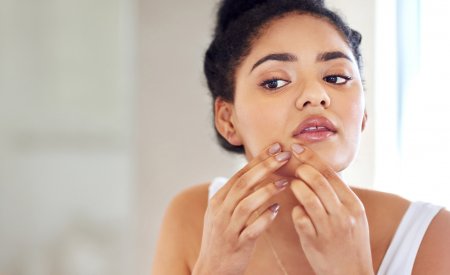Summer and Acne: What You Need to Know?
As the temperature rises, so does your battle against summer breakouts. Did you know that acne is the 8th most common condition in the world? It can occur in individuals across all age groups. However, with effective strategies, you can keep acne under control. Let's explore the reasons behind these breakouts and tips to prevent and manage acne during the summer.
Why sebum production increases during summer?
Under the scorching summer sun, our skin undergoes changes that can trigger increased sebum production. A 1°C change in skin temperature can increase sebum excretion rate by 10%. With prolonged exposure, our skin tries to compensate for moisture loss by increasing oil production called as sebum. This can further cause clogged pores or breakouts.
The following factors contribute to sebum production in summer
- Elevated body temperature in humid weather prompts more sebum production, increasing the risk of clogged pores
- Exposure to UV rays from the sun can make the skin produce more sebum, leading to inflammation
How increased sebum production causes acne breakouts?
Acne lesions usually develop in the sebaceous follicles, which are found on the cheek, forehead, chin, and back in our body. It occurs when the oil glands produce too much sebum and mix with dead skin cells, blocking the hair follicles. This blockage creates a tiny lesion called microcomedones, which can enlarge and accumulate more dead skin cells, leading to visible comedones or pimples.
When our skin gets too oily, it creates a perfect environment for a microorganism called Cutibacterium acnes (C.acnes) to thrive. Our skin naturally produces sebum, which has different components like fatty acids, squalene, etc. When C. acnes colonizes our skin, it alters the composition of sebum.
This excess sebum production can lead to
- Inflammation and/or reddening
- Clogging of pores
- Providing environment for C. acnes to multiply
What other factors can cause acne in summer?2
- UVA light exposure from the sun may contribute to acne during summer due to the formation of comedogenic squalene monohydroperoxide
- Sunscreens, while essential for protection, can sometimes exacerbate acne due to their comedogenic ingredients
- High humidity levels, especially in tropical climates, can worsen acne by promoting skin hydration and pore occlusion
- Friction from activities in hot and humid conditions may irritate the skin and worsen acne flare-ups
What can you do to prevent acne in summer?
Here are some tips to keep acne at bay this summer
- Avoid foods high in glycemic index and calories
- Consume fiber-rich foods to eliminate toxins
- Consume antioxidant-rich foods for their anti-microbial and anti-inflammatory properties
- Use moisturizing sunscreens
- Use oil-free and non-comedogenic products
- Use makeup applicators instead of fingers and clean them regularly
- Avoid heavy makeup to prevent pore blockage
- Avoid popping pimples to prevent redness, swelling, and scarring
- Exfoliate gently to remove dead skin cells without aggravating acne
As temperatures soar, so does the risk of acne flare-ups. But with simple yet effective strategies like maintaining a balanced diet, following a proper skincare routine, and using sun protection, you can take charge of your skin health and enjoy the season with confidence! Remember, acne takes time to clear, so be patient. If you keep experiencing breakouts, don't hesitate to seek professional guidance and treatment for clearer, healthier skin.
Bioderma offers range of skincare products for different skin types such as combination, Oily to acne-prone skin, sensitive skin, normal dry, irritated to atopic skin.
